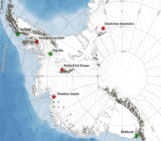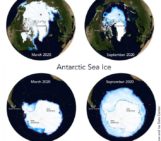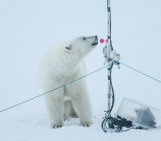
Dragon-skin ice may sound like the name of an episode of the Game of Thrones fantasy franchise. However, this fantasy name hides a rare and bizarre type of ice formation that you can see in our Image of the Week. It has been recently observed by the “Polynyas, ice production and seasonal evolution in the Ross Sea” (PIPERS) research team in Antarctica. This bizarre phenomenon caused by strong wind conditions has not been observed in Antarctica since 2007.
PIPERS expedition observed dragon-skin ice
In early April, the Nathan B Palmer icebreaker (see Fig. 2) began its 65-day voyage to Antarctica to study sea ice in the Ross Sea during the autumn period. This expedition, named PIPERS, was carried out by a team of 26 scientists from 9 countries. Its goal was to investigate polynyas, ice production, and seasonal evolution with a particular focus on the Terra Nova Bay and Ross Sea Polynyas (see Fig. 3).
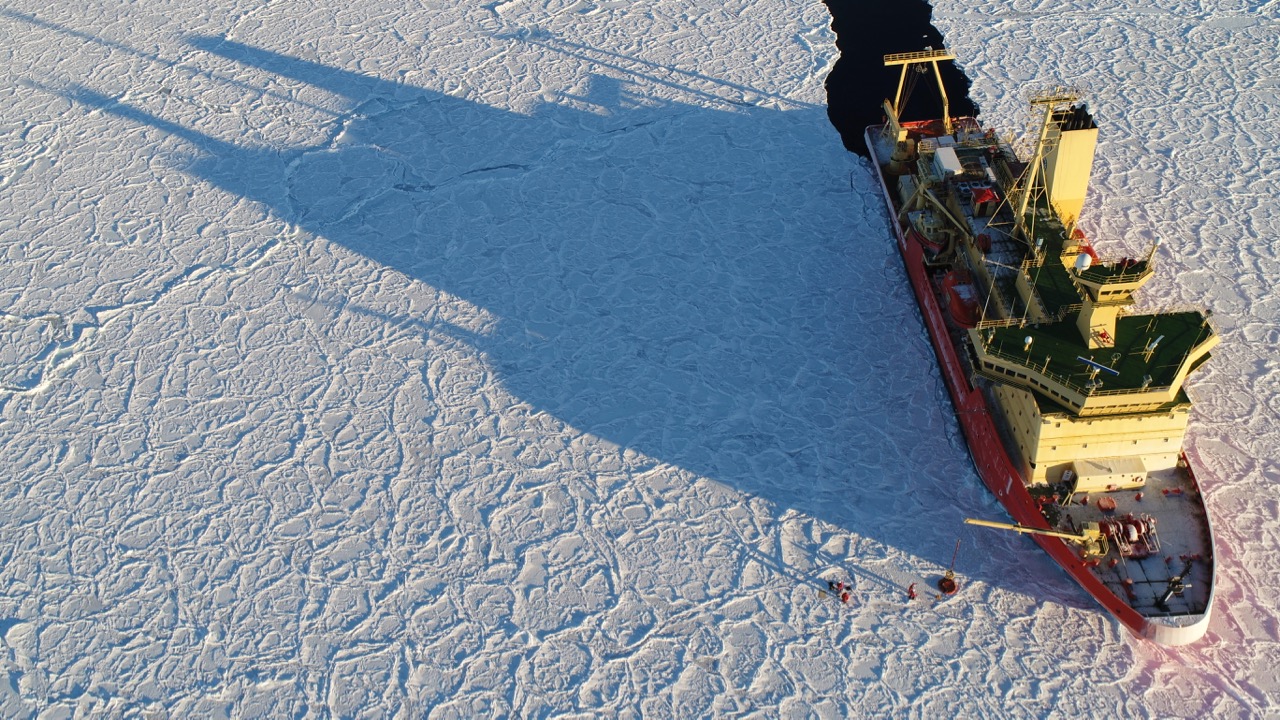
Fig.2 : The Nathan B Palmer icebreaker caught in sea ice [Credit: IMAS ].
A polynya is an area of open water or thin sea ice surrounded by thicker sea ice and is generally located in coastal areas [Stringer and Groves, 1991]. Ice formation in polynyas is strongly influenced by wind conditions whose action can lead to astonishing spatial patterns in sea ice appearance. Special wind conditions probably also lead to what the members of the PIPERS expedition had the opportunity to observe: ice patterns that resemble dragon scales, therefore called dragon-skin ice. Such a sighting is quite remarkable as the last one dates back from a decade. However, the sparsity of observations of dragon-skin ice phenomena is probably a consequence of the relatively small number of expeditions in Antarctica during the autumn and winter seasons…

Fig. 3: The Terra Nova Bay Polynya and Ross Sea Polynya explored by the PIPERS expedition. [Credit: PIPERS ].
Chaotic ice formation caused by strong winds
Dragon-skin ice is a chaotic result of the complex interplay between the ocean and the atmosphere. Coastal polynyas in Antarctica are kept open by the action of strong and cold offshore winds (see Fig. 4) known as katabatic winds, which blow downwards as fast as 100 km/h for several hours [McKnight and Hess, 2000]. Sea ice forming at the cold sea surface gets blown away by these strong winds, preventing a closed sea-ice cover in this area. As the ice is blown away, an area of open water gets in direct contact with the atmosphere, leading to strong cooling and new formation of ice, that gets blown away again, and so on… Therefore, in general, sea ice in polynyas consists of thin pancake ice (see Fig. 5) i.e. round pieces of ice from 0.3 to 3 meters in diameter, which results from the aggregation of ice crystals caused by the wave action. Due to the wind action, the pieces of ice are pushed out by the wind action to the edges of the polynya. As these pieces push strongly against each other, dragon-like scales appear on sea ice giving birth to the so-called dragon-skin ice.
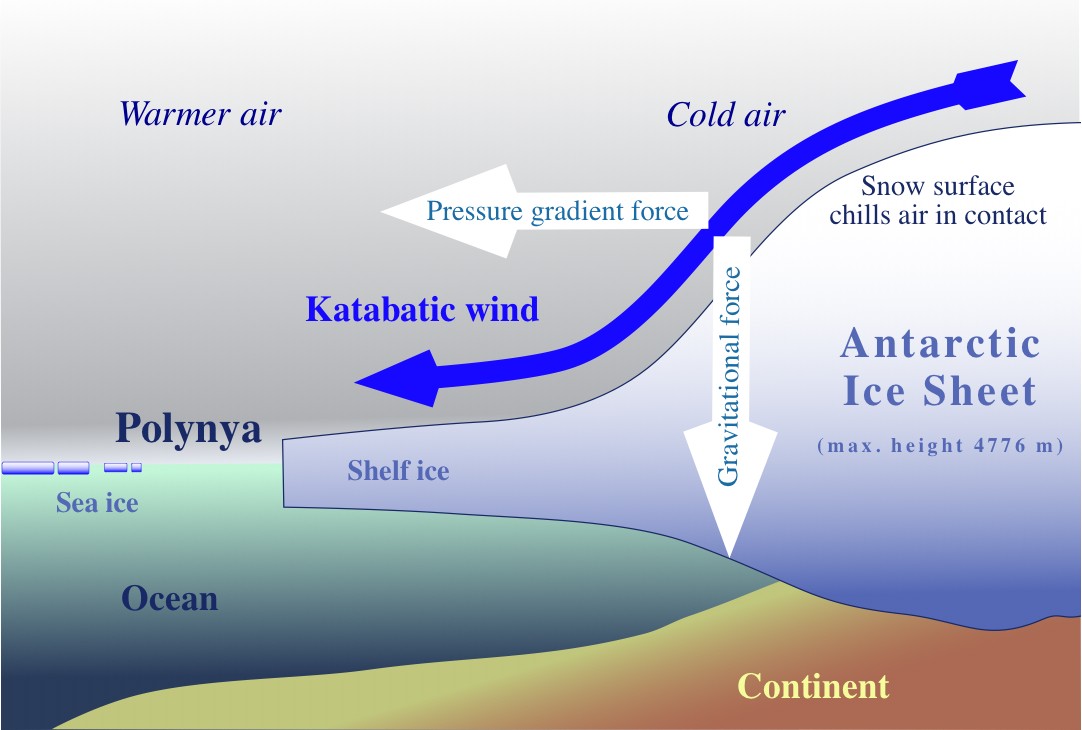
Fig.4: Formation of coastal polynyas due to the action of katabatic winds [Credit: Wikimedia Commons ].
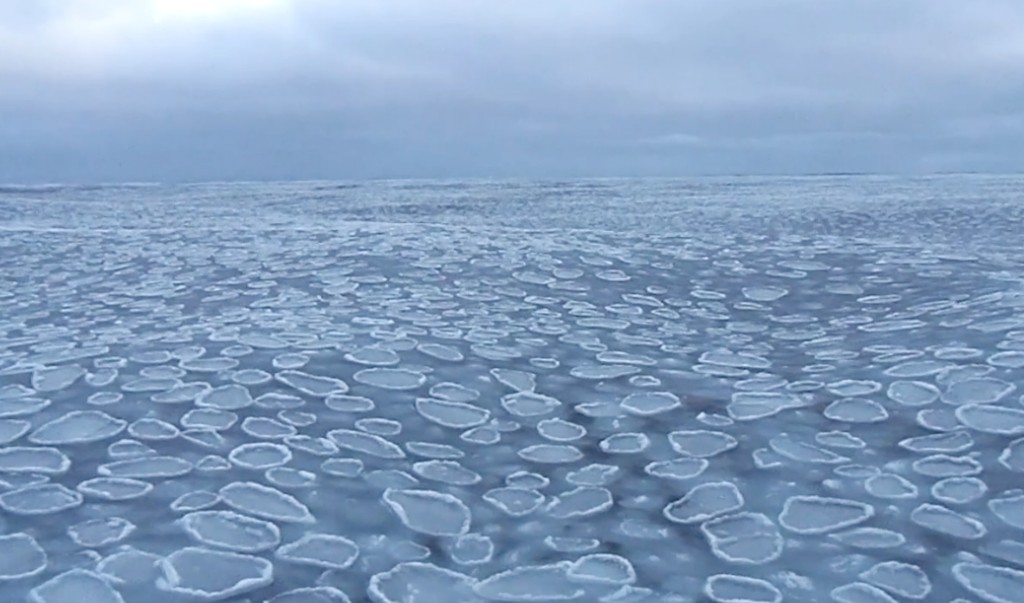
Figure 5: Sea ice in polynyas takes the form of pancake ice due to the action of water waves [Credit: PIPERS ].
The importance of polynyas for ocean-atmosphere interactions
Besides providing us with dazzling pictures of the cryosphere, investigating sea-ice production and evolution in polynyas is essential to better understand the complex interactions between the ocean and the atmosphere.
As sea water freezes into sea ice, salt is expelled into the ocean, raising its local salinity. The incessant production of sea ice in polynyas leads to water masses with very high salinity inside the polynyas. As sea water cools down, it releases energy in the atmosphere, leading to a warming of the atmosphere in polar regions. Moreover, due to their high density, these masses of cold and salty water sink and mix with lower ocean layers.
First results from the PIPERS mission show that when sea ice is forming, polynyas release greenhouse gases to atmosphere, instead of capturing it, as it was previously assumed! But fully understanding what’s happening there will necessitate more time and analyses….
Further reading
- McKnight, T.L. and Hess, D. (2000). Katabatic Winds. Physical Geography: A Landscape Appreciation, pp.131-132. ISBN: 0-13-020263-0.
- Ohshima, K.I., Nihashi, S. and Iwamoto, K. (2016). Global view of sea-ice production in polynyas and its linkage to dense/bottom water formation. Geoscience Letters. DOI: 10.1186/s40562-016-0045-4.
- Stringer, W.J. and Groves, J.E. (1991). Location and areal extent of polynyas in the Bering and Chukchi Seas. Arctic, 164-171.
- Katabatic winds – A load of hot (or cold) air?
- Image of the Week – What an ice hole!
- Image of the Week – The ups and downs of sea ice!
Edited by Scott Watson and Clara Burgard
Modified by Sophie Berger on 3 July 2017 to account for remarks of Célia Sapart (Member of the PIPER expedition)
Kevin Bulthuis is a F.R.S.-FNRS Research Fellow at the Université de Liège and the Université Libre de Bruxelles. He investigates the influence of uncertainties and instabilities in ice-sheet models as a limitation for accurate predictions of future sea-level rise. Contact Email:kevin.bulthuis@ulg.ac.be.



